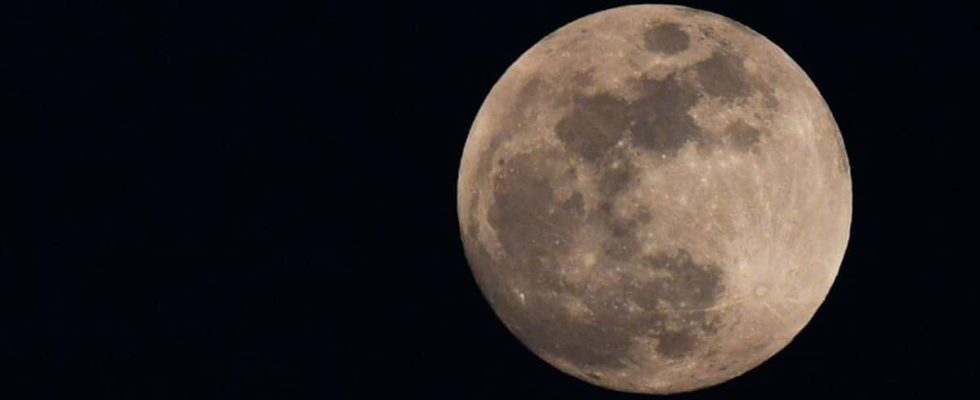If its SLIM lander is successful on Friday (Saturday Japanese time), Japan would expand the circle of countries that have successfully landed on the Earth’s natural satellite. Here’s an overview of the new race to the Moon.
• Read also: Japan will attempt to land on the Moon
• Read also: NASA’s return to the Moon postponed to 2026
• Read also: Sending human ashes to the Moon sparks anger
The return of the United States
AFP
The United States is the only one to have already sent astronauts to set foot on the lunar surface, from 1969 to 1972 during the Apollo program.
After having turned away from the Moon for a long time, including for budgetary reasons, the American space agency (NASA) launched the Artemis program in 2017, which aims to bring astronauts back to its soil, with the eventual construction of ‘a permanent lunar base.
The first two crewed missions of this program, Artémis 2 and 3, have however just been postponed to September 2025 and September 2026 respectively.
NASA is now partnering with private companies to reduce costs, but this also poses a dependency problem.
However, the Starship lander ordered from the private company SpaceX for Artemis 3, the mission which should mark the return of astronauts to the Moon, is far from ready: the machine exploded during its first two test flights last year. A new test is expected in February.
Astrobotic, another private American company commissioned by NASA to send scientific equipment to the Moon, announced on January 10 that its lander had been experiencing serious problems since takeoff, and now had “no chance” of landing. smoothly on the Moon.
Russia’s thwarted ambitions

AFP
Russia failed to land its Luna-25 probe on the Moon last summer, marking the failure of its first mission to the Earth’s natural satellite since 1976.
After shining during the USSR, the Russian space sector is in difficulty due to financing problems, corruption and the isolation of Moscow since the invasion of Ukraine in 2022.
Russian President Vladimir Putin has, however, promised to continue financing lunar missions, and Russia has joined the Chinese lunar base project, a competitor to the American Artemis program.
China on the rise

AFP
The Asian giant plans to send taikonauts to the Moon before 2030 and install a sustainable research station there.
Although China only sent its first human into space in 2003 – a very long time after the Soviets and the Americans – its space program, with a colossal budget and managed by the army, experienced a steady development, with impressive progress in recent years.
China successfully made its first moon landing in 2013. In 2019, it became the first country to land a device on the far side of the Moon. The following year, its Chang’e 5 probe brought lunar samples back to Earth – a world first in more than 40 years.
Beijing also succeeded in 2021 in sending a “rover” (or rover) to Mars, thus imitating the United States, and since 2022 has had its own orbital space station, Tiangong.
A new Chinese mission to bring back lunar samples is planned this year.
The emergence of India

AFP
Although having much more modest means than the established space powers, India managed last year to land an unmanned rocket, Chandrayaan-3, near the lunar South Pole. Prime Minister Narendra Modi now wants to send an Indian to the Moon by 2040.
In the shorter term, India plans to send a new exploratory probe to the polar regions of the Moon in 2025, in association with Japan.
A plethora of small players
The European Space Agency (ESA) is also interested in the Moon, but mainly through international collaborations (United States, Japan). It broke off cooperation with the Russian space agency Roscosmos after the invasion of Ukraine.
South Korea placed its Danuri probe, launched aboard a SpaceX rocket, into lunar orbit at the end of 2022 and has set itself the goal of landing a vehicle on the Moon in 2032.
Intuitive Machines, another American start-up tasked by NASA with a lunar logistics mission, is due to try its luck this year.
No private company has yet successfully landed on the moon. Initial Israeli and Japanese attempts in this category have failed in recent years.
